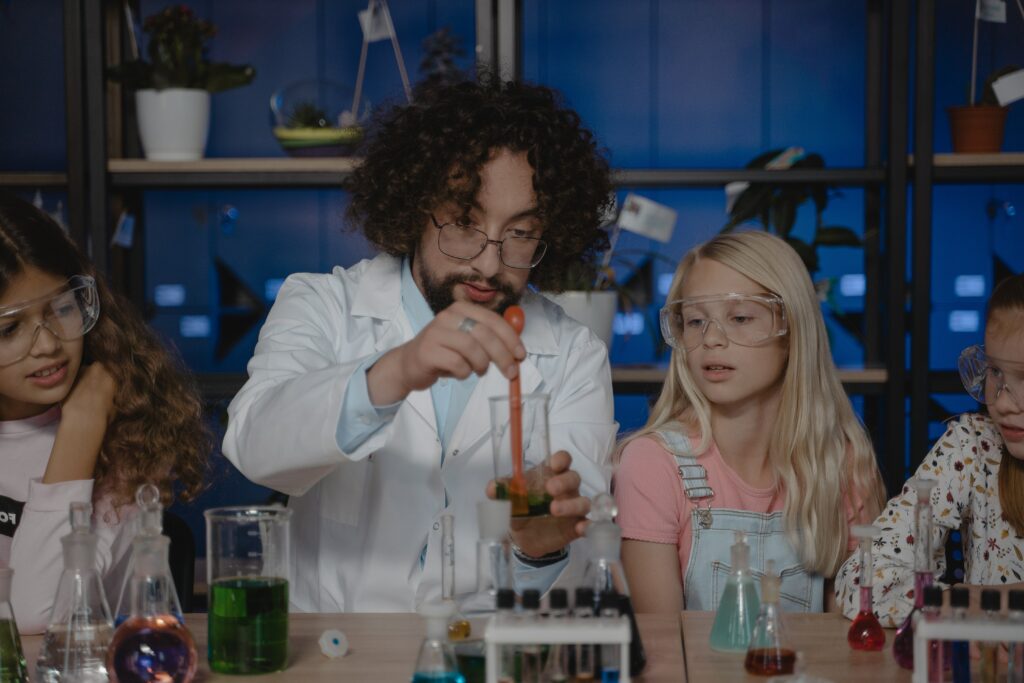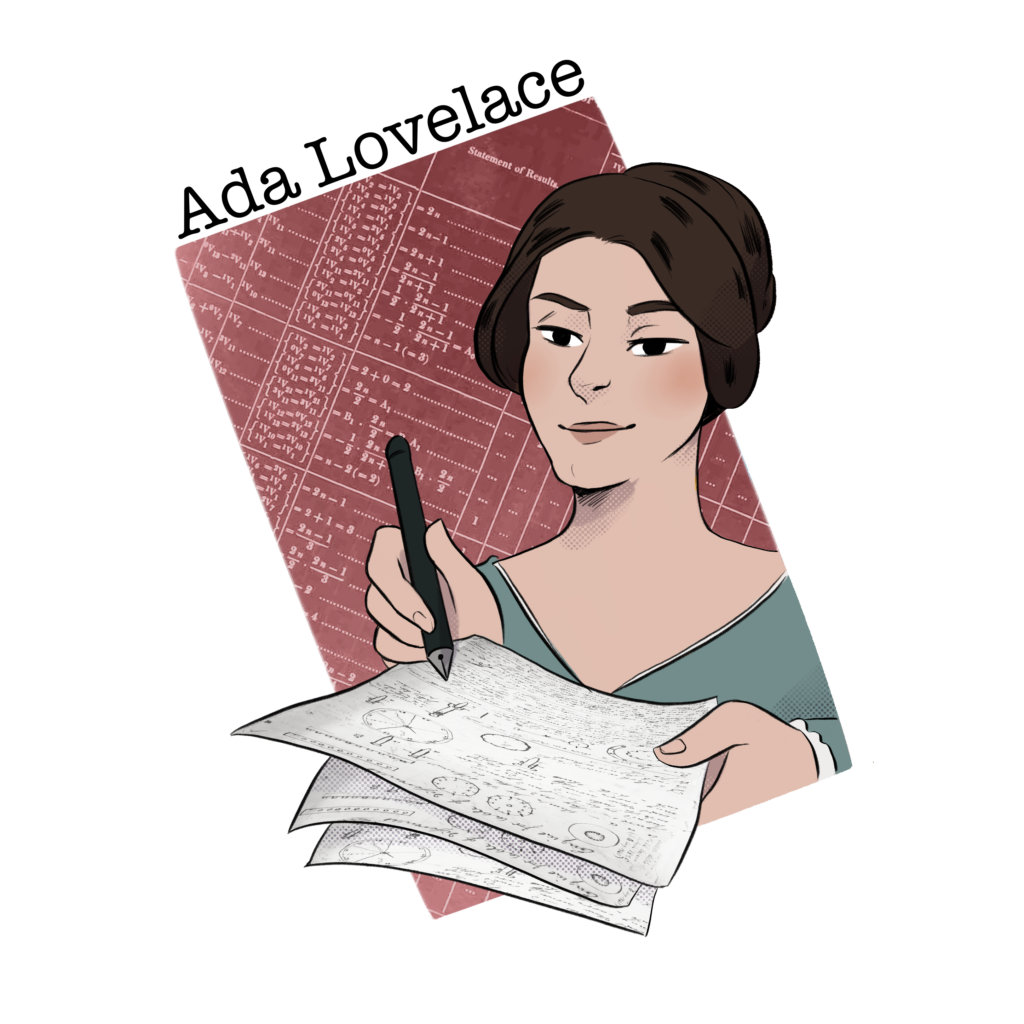
In 2016, the UN declared 11th February as International Day of Women and Girls In Science, to encourage more females to build careers in STEM. The STEM sector (science, technology, engineering, and maths) had been seen as a dominantly male industry to which, over the years, women have made impressive contributions.
Throughout history, women have faced gender discrimination and system barriers. Driven by passion and determination, these challenges never stopped them from playing a key part in scientific advancements and discoveries. Although there are many incredible women to speak about in this post, we celebrate five pioneering women for their contributions to science with 5 facts about them.
Ada Lovelace (1815-1852)
Ada Lovelace was a mathematician and computer programmer who was ahead of her time. Here are 5 facts about the pioneering woman:
- From the age of 4, she was privately tutored in mathematics and science, and then self-educated. She was helped in her advanced studies by mathematician-logician, Augustus De Morgan, the first professor of mathematics at the University of London.
- At 12 years old Ada conceptualized a winged flying apparatus before moving on to think about powered flight.
- The “father of the computer,” Charles Babbage, was her mentor.
- Ada Lovelace is the first computer programmer – in her extensive notes about how Babbage’s analytical engine, she wrote how it can be programmed with a code, which some consider to be the first algorithm to be carried out by a machine, and thus became the first computer program.

Alice Ball (1892-1916)
Alice Ball developed an injectable treatment for leprosy that was used up until the 1940s. Here are five facts about the pioneering woman:
- She developed the first injectable leprosy treatment using chaulmoogra oil which, up until then, was used in Chinese and Indian Medicine.
- Alice was the first African-American and first woman to graduate with a Master’s Degree in Chemistry from the University of Hawaii (then known as the College of Hawaii).
- She was the first African-American chemist to develop an injectable treatment for Leprosy.
- Alice’s Leprosy treatment, later known as “The Ball Method” alleviated Leprosy symptoms. It was used on thousands of affected individuals over thirty years until sulfone drugs were introduced.
- She was offered a teaching and research position after graduating and became the College of Hawaii’s first female chemistry instructor.

Jane Goodall (April 3, 1934 – Present)
Although she had no formal training, Jane Goodall ventured into Gombe Stream National Park in Tanzania. She is known for her amazing work on the behavior of Chimpanzees. Here are five facts about this pioneering woman.
- Jane made several observations about the behavior of chimpanzees that challenged conventional scientific theories held at the time.
- She worked as a secretary and a film production assistant until she gained passage to Africa.
- Jane assisted paleontologist and anthropologist, Louie Leaky, and her association with Leaky led to her establishment of a camp in the Gombe Stream National Park. Here she observed the behavior of Chimpanzees.
- She corrected a number of misunderstandings about Chimpanzees over the years. She found that they are omnivorous, not vegetarian; that they are capable of making and using tools, and that they have complex and highly developed social behaviors.
- Jane is still hard at work, raising awareness and money to protect the Chimpanzees in their habitat through her non-profit organizations, the Jane Goodall Institute, and its youth program, Roots & Shoots. Her work opened up doors for other women in science.

Marie Curie (1867 – 1834)
With her husband, Pierre Curie, Marie’s efforts led to the discovery of radioactivity. She became the first woman to win the Nobel Prize and the first person to win the award twice. Here are five facts about this pioneering woman:
- Marie Curie and her older sister, Bronya, both wished to pursue higher education, but the University of Warsaw did not accept women, so they had to leave the country to get the education they desired. She attended Sorbonne in Paris.
- One of Curie’s professors arranged a research grant for her to study the magnetic properties and chemical composition of steel, which put her in touch with an accomplished researcher, Pierre Curie, who later became her husband.
- From her research of uranium compounds, Curie documented her findings in a seminal paper, where she coined the term “radioactivity.”
- The Curies worked together to examine loads of pitchblende, which led to the discovery of new elements, polonium, and radium.
- When World War One broke out in 1914, Marie devoted her time and resources to help. The use of portable x-ray machines in the field was championed by Marie, and these medical machines earned the nickname “Little Curies.”

Valentina Tereshkova (March 1937 – Present)
After the first human spaceflight by Yuri Gagarin, the selection of female cosmonaut trainees was authorized by the Soviet government. Valentina was the first woman in space. Here are five facts about this pioneering woman:
- Her expertise in parachuting led to her selection as a cosmonaut.
- She spent several months training which included weightless flights, isolation tests, 126 parachute jumps, and pilot training in jet aircraft.
- She spent three days in space and orbited Earth 48 times in her space travel capsule.
- Valentina had no experience as a pilot, she was accepted into the program because of her 126 parachute jumps.
- Valentina has only traveled to space once. Despite her success, it wasn’t until 19 years later before another woman traveled to space.

Women have made many amazing discoveries and breakthroughs within all areas of science What they believed in and stood up for opened up doors for women to pursue professional careers in STEM. However, there are still not enough women in this field and as parents, teachers, and educators, it is imperative that we continue to support our children’s passion for science, technology, engineering, and mathematics.
References
10 Things You May Not Know About Ada Lovelace – HISTORY
Alice Ball – Contributions, Facts & Leprosy (biography.com)
Marie Curie: Facts and biography | Live Science
Jane Goodall | Biography, Awards, Institute, Books, & Facts | Britannica
10 Facts About Valentina Tereshkova (historyhit.com)

